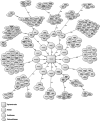Lay perspectives of successful ageing: a systematic review and meta-ethnography
- PMID: 23794575
- PMCID: PMC3686235
- DOI: 10.1136/bmjopen-2013-002710
Lay perspectives of successful ageing: a systematic review and meta-ethnography
Abstract
Objectives: The aim of the current study was to conduct a systematic review of lay perspectives of successful ageing (SA), synthesise these data using a metaethnographic framework and to provide a snapshot of extant lay perspectives of SA.
Design: A systematic review of layperson perspectives of SA was conducted across MEDLINE, PsycInfo, CINAHL, EMBASE and ISI Web of Knowledge.
Participants: Peer-reviewed studies conducting qualitative investigations of lay perspectives of SA were included. Included studies were coded and analysed using NVivo V.9 to examine underlying themes of SA.
Results: The search strategy identified 7285 articles; 26 articles met the inclusion criteria. Laypersons identified psychosocial components, notably engagement (eg, social engagement), and personal resources (eg, attitude) as integral components of SA more often than 'physiological' components, such as longevity or physical functioning. These results also highlight the profound under-representation of non-Western countries and the cultural homogeneity of research participants.
Conclusions: The current study reveals the importance laypersons place on incorporating psychosocial components into multidimensional models of SA, as well as highlighting the need for increased research with under-represented populations.
Keywords: Geriatric Medicine; Public Health; Qualitative Research.
Figures
References
-
- Depp CA, Jeste DV. Definitions and predictors of successful aging: a comprehensive review of larger quantitative studies. Am J Geriatr Psychiatry 2006;14:6–20 - PubMed
-
- Rowe JW, Kahn RL. Successful aging. Gerontologist 1997;37:433–40 - PubMed
-
- Rowe JW, Kahn RL. Human aging: usual and successful. Science 1987;237:143–9 - PubMed
-
- Folstein MF, Robins LN, Helzer JE. The Mini-Mental State Examination. Arch Gen Psychiatry 1983;40:812. - PubMed
-
- Katz S. Assessing self-maintenance: activities of daily living, mobility, and instrumental activities of daily living. J Am Geriatr Soc 1983;31:721–7 - PubMed
Grants and funding
LinkOut - more resources
Full Text Sources
Other Literature Sources
Miscellaneous





